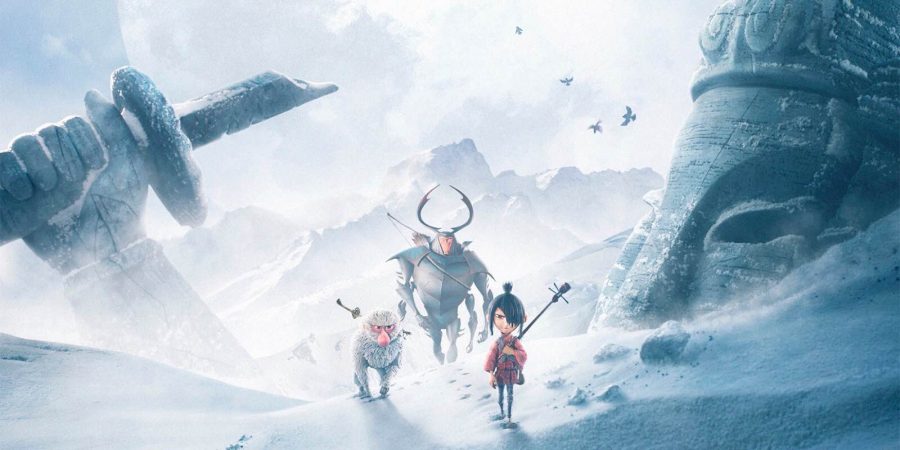“Kubo and the Two Strings” a delightful and charming animated feature
September 9, 2016
“If you must blink, do it now.”
Let me be very transparent about this: when it comes to movies and shows, I am heavily biased towards animation. Movies like this are perfect examples of why that bias exists for me.
Kubo and the Two Strings above all is a beautiful movie. I have more than enough to say about the animation and design in this movie.
But first, a little background. Made by the studio that produced the delightfully creepy Coraline and The Boxtrolls, Kubo is about a young storyteller who must confront the immortal Moon King, who wishes to take away his one remaining eye (sound familiar?) and steal him away from the earth.
Kubo himself makes for a good protagonist and has a really cool power. By playing music on his shamisen (traditional three stringed lute), he can animate everyday objects and manipulate them at will. The movie uses this power in very creative ways, the best of which being for the storytelling scenes. By folding paper into origami, Kubo can tell a story to a crowd by bringing the figures to life.
The storytelling scenes are absolutely beautiful, utilizing the wonderful stop motion animation and the fantastic music in tandem. They are easily one of the best showcases for the animators’ talent. The rest of the movie boasts a similar fidelity of animation. The animation is very fluid and a joy to watch in both the faster paced action scenes and the slow plot-focused scenes. Characters are distinct and well designed for the most part, with extra props going to both Kubo and his aunts’ designs. From snowy ruins to a leaf-clad ship, the scenery provides a nice backdrop and blends well with the eastern aesthetics.
Another strength the movie possesses is something I love to see in animated features: silent storytelling. I don’t mean this in the way of Kubo being a silent movie, but rather in that the movie does a great job of using imagery to convey plot elements and ideas without actually including dialogue. For instance, an early scene in which Kubo helps out his mother uses no dialogue, but one can easily tell she has trouble doing ordinary things to some extent because of an injury. This can be inferred from the scar on her face, the blank stare she devolves into at points, and the limp-like quality of her motions. While other scenes rarely go silent like this one, the imagery that is presented is really effective at conveying the outcome of a situation.
Even with everything I loved about the movie, there are some nicks in it. After the adventure picks up, some pacing issues rear their head. Transitions between scenes can sometimes be wonky, leaving the audience to feel like there’s a missing piece in between the two scenes. The humor also just doesn’t work sometimes. While the movie has it’s fair share of humorous moments, some of the jokes are very juvenile and fall flat.
Thankfully these flaws are only momentary distractions and don’t affect the overall viewing experience. The unique charm and wonderful animation are likely to be enough to pull users in.
As a whole, Kubo and the Two Strings is an enjoyable, if unpolished, experience and definitely manages to feed my bias for animated features.
Score: 8/10
Genre: Animation, Fantasy




